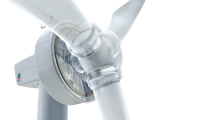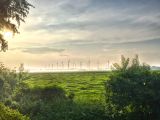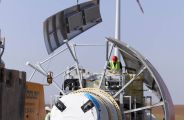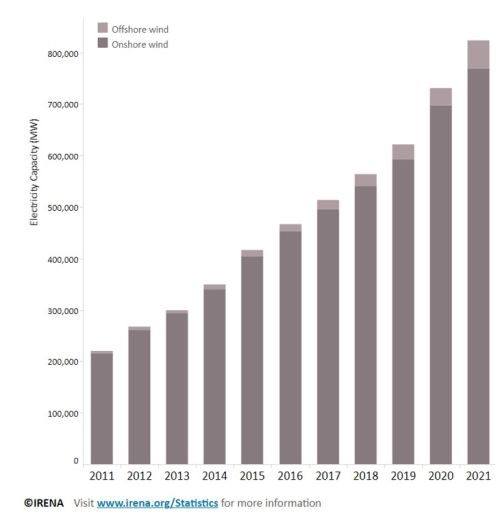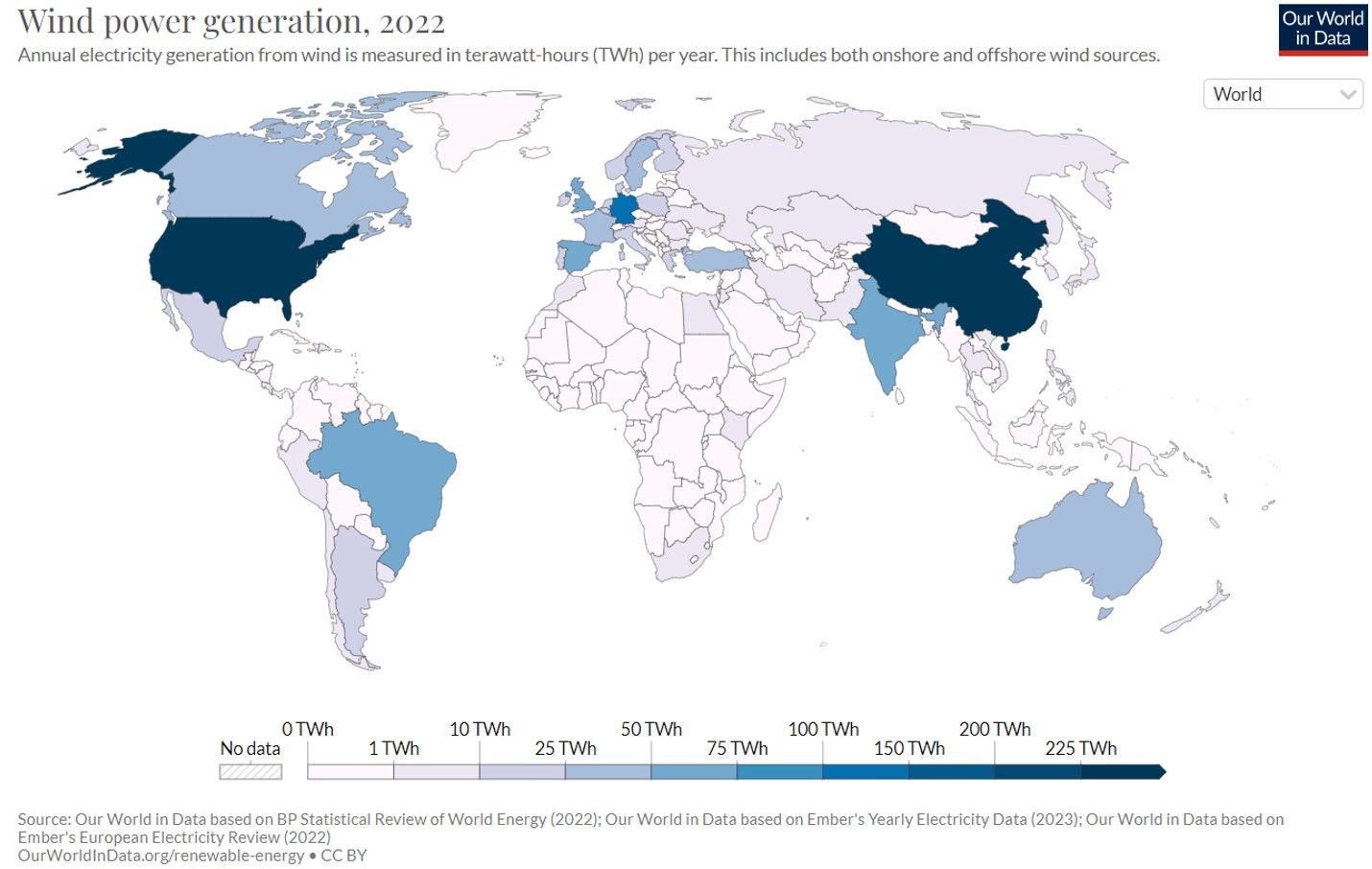Wind Energy
What makes wind energy so special
Technology
How it works
Wind power is one of the most elegant and simple ways to produce energy. Moving air drives the rotor blades of a wind turbine to turn around. The kinetic energy of the rotation is used to power a generator which produces the electricity.
Wind Turbines
The visible parts of a wind turbine are the blades, hub, nacelle and tower. The main operating components are situated inside the nacelle (rotor, stator and machine house among others) and inside the tower (E-module). The blades are made out of laminated materials such as composites, balsa wood, carbon fibre and fibreglass. The tower typically consists of three to four tubular steel sections with a concrete basement to prevent the turbine from falling. The nacelle and blades are mobile and turn around so that the hub always faces in the direction where the wind is coming from.
Wind Parks
A wind park is an area of land with several wind turbines on it. Because wind turbines produce wakes, the park layout has to be carefully designed and the turbines cannot be located too close to each other. All turbines of a park are connected at a substation, where the electricity is collected. From there, the electricity is then fed into the existing power grid.
Global Context
Facts and figures of this section originate from the Global Wind Energy Council (GWEC).
History
Since ancient times, wind power was used by humans - for example for natural ventilation in buildings or already 5,500 years ago for sailing with boats. The Greeks constructed wind-driven machines and windmills, which were used as early as in the 7th century after Christ. The first wind turbine to produce electricity was built in 1887 in Scotland. However, wind power got overrun by cheap fossil fuel electricity production and it took nearly a century until it became finally economically viable. In the seventies of the last century, when oil got more expensive and air pollution a matter of concern, the renewable resource wind gained more importance again. At last, a remarkable wind boom started in the 90s, when also awareness about air pollution and climate changes rose.
Ongoing boom - Worldwide Wind Power Capacity is on the Rise
Worldwide, the installed capacity of wind power per year is continuously increasing. Over the last ten years, an average annual growth rate of approx. 15% was recorded. This boom strengthened during the last years with the installation of huge wind capacities worldwide. With regards to technology and performance, this resulted in a great leap forward. Nowadays, wind power is one of the cheapest energies on the market. There is no other technology with similar growth rates as wind, and its share of the global energy mix is increasing steadily.
Figures and Future
According to Our World in Data, total installed wind capacity worldwide reached 824.87 GW by the end of 2021. This represents an increase of 12.7 % compared to the previous year. Countries with the highest installed capacity are China, USA, Germany, India, Spain, UK, Brazil, France and Canada.
In 2021, more than 6% of worldwide electricity production was generated by wind power. The International Renewable Energy Agency (IRENA) describes in their Climate-Resilient Pathway the amount of installed wind power needed to achieve the Paris climate goals. Global cumulative onshore wind capacity would have to rise to 1,787 GW (more than +150% compared to 2020) in 2030 and to 5,044 GW (more than +600% compared to 2020) in 2050, while offshore wind capacity would have to rise to 228 GW (more than +500% compared to 2020) and 1,000 GW (more than + 2800% compared to 2020) in the aforementioned years. Moreover, onshore and offshore wind would account to 35% of global electircity production in 2050, becoming the prominent generation source.
Benefits
Wind is free
In a world of finite resources, wind energy is a perfect solution. Wind is a free and indigenous fuel. There is no cost to bring it to Ghana, the price never changes and it will never run out. It provides a secure and clean supply of power to Ghana for years to come.
Dumsor Dumsor
Ghana’s severe electricity lack in the past years was retaining economic growth and impedes the country to enhance its wealth. As one of the biggest wind parks on the African continent, the 250 MW Konikablo project will improve the power supply in Ghana and make it more reliable. It will be an important stepping stone for getting into renewable energy production and therewith help to overcome “dumsor”, the Ghanaian vogue term for the ongoing electricity crisis.
No pollution
Fossil fuels like coal, oil and gas provoke climate change and pollute our air with toxic substances. Atomic power devastates land because of uranium mining, comprises a high risk of nuclear contamination during operation and leaves behind radiating waste which will be dangerous for ten thousands of years. In contrast, wind turbines do not produce any harmful or toxic substances during operation. Complying with the EPA guidelines, there are no health dangers and the safety risk is insignificantly small. In addition, compared to fossil fuel and nuclear power plants, wind technology uses almost no water. Once the lifetime of a wind park is over, the turbines can be dismantled and the materials recycled.
Community Benefits
Communities around the project area will not only benefit from better power supply like the rest of Ghana, but also profit from direct improvements. The most important gains are jobs for local people, which will create new possibilities. It is estimated that there will be around 600 jobs created during the phase of construction. During the 20 - 25 years of operation, around 80 people could be employed permanently. Apart from this direct employment, there will be a substantial contribution towards the general economic development by creating employment through suppliers.
A further indirect benefit for the communities around the Wind Farm will be the construction of new access roads and the improvement of existing tracks. After construction, these roads can also be used by the public, what will ease the access for the farmers to their fields.
Finally, a share of the Wind Farm’s operational revenue will be spent on community projects, which aim to directly benefit the local people of the Wind Farm.
